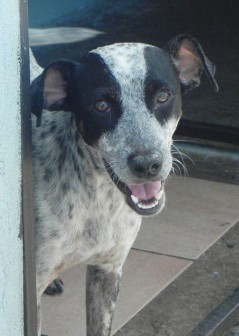Continued
Fractures
For our purposes of easy understanding, a broken bone (irrespective of cause – usually a hit) is a fracture. Mechanical trauma (a nice phrase for a ‘hit‘), if severe enough, will crack the bone or even shatter it.
Here in Guyana, we have some weird ideas about fractures. I have heard people (non-medical, of course) argue ‘knowledgeably‘ about simple and compound fractures. A simple fracture, they say, occurs when the bone is broken in only one place; a compound fracture, according to them, is the breaking of the bone in many places. Well, that concept is not correct. A simple fracture, simply means that the broken bone does not project through the skin. On the other hand, in the case of a compound fracture, the bone has made contact with the external environment. In the latter case, the skin is broken and there is an open wound. Of course, in such instances, it is easy for germs (infection) – via the open wound – to enter.
Some bones just crack or bend; this is called a Greenstick fracture. It usually occurs in young dogs. In fact, there is condition in young dogs (when bones are still soft) whereby, instead of an outright break, the bones of the leg actually just bend. It is not easy to straighten the bone. Actually, I think that a fracture is easier to deal with than a bent bone.
 Let me say one more thing about fractures. Most fractures occur because the animal has been involved in some type of physical encounter, eg a vehicle accident, a fall from a height, a lash from an angry person or a wicked schoolboy. The result of this ‘mechanical trauma‘ (that’s what the cause of the damage is called), is shock, possible haemorrhaging (blood loss) and injures to internal organs. Well, treating these other problems must take precedence over the handling of the fracture. If the animal is bleeding, then our first action is to stop the bleeding. Also the shock condition must be dealt with as a priority. In any case, you have got to take the injured animal to the vet, pronto.
Let me say one more thing about fractures. Most fractures occur because the animal has been involved in some type of physical encounter, eg a vehicle accident, a fall from a height, a lash from an angry person or a wicked schoolboy. The result of this ‘mechanical trauma‘ (that’s what the cause of the damage is called), is shock, possible haemorrhaging (blood loss) and injures to internal organs. Well, treating these other problems must take precedence over the handling of the fracture. If the animal is bleeding, then our first action is to stop the bleeding. Also the shock condition must be dealt with as a priority. In any case, you have got to take the injured animal to the vet, pronto.
Treatment of bone fractures

The control of the shock and haemorrhages and trying to repair the damage to internal organs might have to take precedence (according to the extent of the trauma and its effect) over the treatment of the fracture.
Suspected fractures should be immobilized to prevent further damage during movement of the dog to a veterinary hospital. Accomplish this by splinting the involved limb. A satisfactory splint is one which crosses the joint above and below the injury. This assures non-movement of the fractured part.
When a fracture is below the hock or the elbow, immobilize it by folding a magazine around the leg. Then wrap it with roller gauze, an old necktie, or anything handy. Higher fractures can be immobilized by binding the limb to a padded board, or on to the dog’s own body with a bandage.
If the fracture is a complete break, your veterinarian probably will want to reduce the fracture and return the ends of the bones to their original position. Reduction is accomplished by pulling on the limb to overcome muscle spasm (which causes shortening of the leg). This requires an anaesthetic. Once reduced, the position of the bones must be maintained. Splints and casts are often effective, enough. Sometimes, metallic plates and pins are needed.
Bone infection (Osteitis)
Once an infection agent (germ) breaks through the body’s natural defence mechanism and attacks the bone, we have a serious problem on our hands. The bone infection is made easy when there is a compound or open fracture, that is when the bone is exposed to the external environment.
Of course, infection can attack the bone, if complete sterility is not observed during bone/joint (orthopaedic) surgery. In dogs, bite wounds – which might actually damage the bone or whereby the punctured would carries the germ close to the bone – are often the cause of bone infections. Penetrating foreign bodies would also have the same effect.
Please implement disease preventative measures (vaccinations, routine dewormings, monthly anti-heartworm medication, etc) and adopt-a-pet from the GSPCA’s Animal Clinic and Shelter at Robb Street and Orange Walk, if you have the wherewithal to care well for the animals. Do not stray your unwanted pets, take them to the GSPCA’s Clinic and Shelter instead. If you do not wish your pet to have puppies or kittens, you may exploit the GSPCA’s free spay and neutering programme. If you see anyone being cruel to an animal, or if you need any technical information, please get in touch with the Clinic and Shelter by calling 226-4237.









